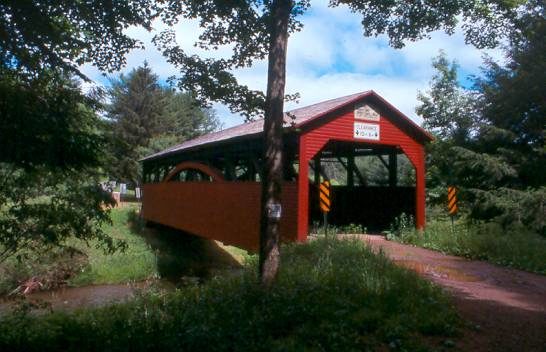History of Cogan House Township
Excerpted from the following books:
“The Early History of Cogan House Township”
by Milton W. Landis & Dr. Carl B. Taylor (c) 1981 *
“Cogan House Township-The 1900s”
by Nancy E. Baumgartner (c) 1998. *
“History of Lycoming County Pennsylvania”
Edited by John F. Meginness (c) 1892;
Cogan House Township dates to December 1843 when the territory was taken from Jackson and Mifflin Townships. In the Spring of 1843, the following men were the first officials named to run the township: Justice of the Peace-Joseph Stryker; Supervisors-John Aikin and G. Botts; School Directors-Joseph Stryker, John Weigel, Benjamin Quimby, Paul Stryker, Charles Straub, and G. Botts. Descendants of some of these men still live in the township.
Covering an area of 39,360 acres, Cogan House Township is bounded on the east by Lewis and McIntyre Townships, on the north by Jackson Township, on the west by Pine and Cummings Townships and on the south by Mifflin, Anthony, and Lycoming Townships.
Larry’s Creek, begins as a tiny trickle near Steam Valley and proceeds westerly through the township on its twenty-five mile journey to the Susquehanna River. A number of other streams meander through the township as well. Hoagland’s Run, Bear Run, Flook’s Run, Pack Horse Run, Wendell Run, Roaring Run, Little Gap Run, Big Sandy Run, and Wolf Run water the area landscape.
David Cogan was one of the first settlers to the region and left his mark. Arriving sometime around 1825 he built a log house, cleared ground and made other improvements. He left the area in 1842 but his log home remained standing and became known by hunters and travelers as “Cogan’s house.” When the township was incorporated in 1843 the identification became official. The man Cogan was no where around but his name would live on.
This area was home to fine timber and an abundance of game in the 1800s. The township became one of the best lumbering districts in the county and soon sawmills began to spring up. James Wood, Isaiah Hayes, F. Whitlock and Mr. Schuyler operated some of the earliest local mills.
The virgin trees that once covered these hills were harvested to feed the lumber mills of Williamsport. However, by the early 1900s only stumps from the giant trees remained. The land no longer held economic interest for the lumber barons. Many of the men who came to work in the woods and at the sawmills had married and created families while living in Cogan House Township. Some decided to stay on and try their hand at subsistence farming. Slowly, the family farm took root in the sawdust left behind by the woodcutters.
The settlements at Brookside, White Pine, Cogan House, Beech Grove, Green Mountain, Steam Valley and on Buckhorn Mountain took shape. Many grew into villages where a horse could be shod, supplies bought at the general store, mail and newspapers picked up, a vote cast at election time and gossip exchanged. Churches and schools were built to accommodate the spiritual and educational needs of the community.
By 1900 Cogan House Township was home to five churches, five post offices, seven schools, two general stores and a thriving population. During the 20th Century this mostly agrarian society was redefined through war, modern transportation, better roads, advanced communication systems, the lure of higher wages in far away places and the consolidation of schools and churches.
What has transpired here since the first settlers climbed the Buckhorn represents a microcosm of what has happened in America. Settling uncharted land, carving a place out of the wilderness, welcoming in newcomers, creating a community and then drawing strength from that community for the business of living did not just “happen.” It is the pattern that shaped the establishment of all small, rural places which when taken collectively form these United States. The daily experiences of Cogan House Township residents were in direct relationship to what was transpiring in their environment in the early part of the 20th century. However, the intrusion of the outside world and the wider horizons those intrusions presented say much about the way the world was moving during the past century.
During the mid-1900s the economic, social and educational benefits of cities drew young people away from their rural roots. Cogan House Township saw a decline in population in the 1940s, 50s and 60s. However, today’s technology has made it possible to live and work almost anywhere. Rural life is once more appealing to families looking for a safe, clean environment in which to put down roots. As the world moves into the new millennium Cogan House Township is experiencing new growth. The technology of the 21st Century has transformed rural areas into easily accessible domains in which to live, work, become educated and pursue spiritual gratification. The woodsmen who journeyed here carved a living from the forest and stayed on to create a community. More than a hundred and fifty years later we, the current residents of Cogan House Township, are fortunate to be the beneficiaries of their vision and the caretakers of their legacy.
Cogan House Township is one of the only townships in Pennsylvania to have a complete published history from 1843 to 1998.
The Lycoming County Genealogy Society has the rights to reprint both of the Cogan House History books.

